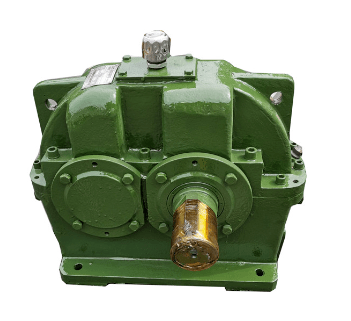Gear reducer transmission ratio

The transmission ratio of a WPWD250,WPWK40,WPWK50,WPWK60,WPWK70 gear reducer directly affects the output torque and power of the reducer. Normally, the higher the transmission ratio of a gear reducer, the greater the output torque and the lower the output power.
What is the transmission ratio of a gear reducer
The transmission ratio of a gear reducer is related to the number of teeth and modulus of the gears. By changing the number of teeth and modulus of the input shaft gear and output shaft gear, the transmission ratio of the gear reducer can be changed. When the number of teeth on the input shaft gear is greater than the number of teeth on the output shaft gear, the transmission ratio of the reducer is greater than 1, which means deceleration. On the contrary, when the number of teeth on the input shaft gear is less than the number of teeth on the output shaft gear, the transmission ratio of the reducer is less than 1, that is, the speed increase.
In practical applications, the transmission ratio of gear reducers needs to be selected according to specific work requirements. When it is necessary to output a large torque, a gearbox with a larger transmission ratio is usually chosen; When high speed output is required, a gearbox with a smaller transmission ratio is usually chosen.
The transmission ratio of gear reducers can also be achieved through multi-stage reduction.
Multi stage reduction refers to the setting of multiple stages of gear transmission inside a gear reducer, achieving a larger transmission ratio through series or parallel connection. Multi stage reduction can effectively improve the transmission ratio of the reducer, thereby adapting to a wider range of work requirements. However, multi-stage reduction also increases the volume and weight of the gearbox, making manufacturing, installation, and maintenance more difficult. At the same time, it also increases the friction and loss of gear transmission, reducing the efficiency of the gearbox.
It should be noted that the size of the gear reducer transmission ratio is not necessarily better. Excessive transmission ratio can increase the load on the gears, reduce the efficiency of the reducer, and may lead to gear wear and damage. Therefore, when selecting the transmission ratio of a gear reducer, it is necessary to comprehensively consider factors such as output torque, output power, efficiency, and make a reasonable selection and design.
The transmission ratio of a gear reducer can also have an impact on the noise and vibration of the reducer. The larger the transmission ratio, the slower the gear speed, and the corresponding reduction in noise and vibration of the gearbox. Therefore, in situations where low noise and vibration are required, choosing a gearbox with a larger transmission ratio is also an effective solution.
In addition to the number of teeth and modulus of the input shaft gear and output shaft gear, the transmission ratio of the gear reducer is also related to the structural form of the reducer. Common reducer structures include parallel shafts, vertical shafts, and helical gears. The calculation method for the transmission ratio of reducers with different structures is also different. Therefore, when selecting a reducer, it is necessary to consider the characteristics and advantages of different structures, and choose according to the actual situation.
In summary, the transmission ratio of a gear reducer is one of the important parameters that directly affects the performance indicators of the reducer, such as output torque, output power, efficiency, noise, and vibration. In application, it is necessary to select the appropriate transmission ratio according to specific work requirements, and carry out reasonable design and maintenance to ensure that the reducer has stable, reliable, and efficient working performance.
-
2024-05-31The WPWD120,WPWD135,WPWD155,WPWD175,WPWD200 helical gear reducer is one of the indispensable key equipment in modern industrial production. It can stably reduce...Details +
-
ZJY180 hard tooth surface gear reducer
2024-05-31WPW155,WPW175,WPW200,WPW250,WPWD40 Gear reducer is a widely used mechanical equipment in various fields, and it is highly favored by users for its efficient and...Details + -
DCY355-40-1 Hardened bevel gear reducer
2024-05-30In various industries, the application of mechanical equipment is indispensable. In mechanical equipment,WPWDKV70,WPWDKV80,WPWDKV100,WPWDKV120,WPWDKV135 the...Details + -
Working principle of ZQ850-48.57-1 gear reducer
2024-05-30WPEEDO70-120,WPEEDO80-135,WPEEDO80-147,WPEEDO100-155,WPEEDO120-175 Gear reducers are indispensable power transmission devices in modern industrial fields, JZQ85...Details +







